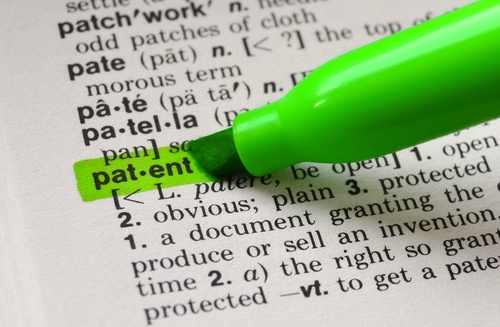Editor’s Note: Leonid (“Lenny”) Kravets is a patent attorney at Panitch, Schwarze, Belisario and Nadel, LLP in Philadelphia, PA. Lenny focuses his practice on patent prosecution and intellectual property transactions in computer-related technology areas. He specializes in developing IP strategy for young technology companies and blogs on this topic at StartupsIP. Follow Lenny on Twitter: @lkravets and@startupsIP.
A recent TechCrunch guest post by Jeffrey Shieh suggests that startups should file for international patent protection for a variety of reasons. Mr. Shieh does a great job of explaining the benefits and options for seeking international patent protection. However, based on my experience working with startups, I disagree with his conclusion that startups should expend precious early funds on international filings.
Filing for patent applications, whether in the U.S. or abroad, is an expensive proposition even for well established companies. I have previously argued here that despite these costs, filing for U.S. patents is worthwhile because U.S. patents provide an additional value proposition to potential acquirers of startups. The costs, however, come at the opportunity cost of critical needs such as engineers and designers. While I stand by my opinion regarding the value of U.S. patents to startups, it is my belief that in most cases, international patent applications cannot be considered in the same light.
Why is foreign filing not worth this expense? Simply put, the costs outweigh the benefits. For most U.S. based companies, U.S. intellectual property rights will provide most of the feasibly attainable economic value. Many startups will also run up against European restrictions on software and business method patents, and not even be able to receive the desired coverage.
THE LIMITED VALUE OF INTERNATIONAL PATENTS TO STARTUPS
It is tempting to look at the global patent wars and feel that startups must play on the same international level to compete. International courts are becoming increasingly involved in the mobile patent wars between Samsung, Apple and their ilk. However, for companies with more meager means, the cost of litigating in these courts will be untenable even if an infringement abroad occurs. While several alternative avenues of patent monetization exist in the U.S., such models are not well developed abroad.
For example, while the U.S. has a well developed contingency litigation model to fund patent litigation, most foreign countries do not allow this approach. Furthermore, a rapidly developing patent market in the U.S. has resulted in the value of U.S. patents increasing from a competition for patent acquisitions by the likes of Facebook, Microsoft, Google, Apple, RPX and Intellectual Ventures, just to name a few. Perhaps it is for this reason that in my experience with patent transactions, potential acquirers of IP assets assign almost all of the value of an IP portfolio to the U.S. assets. Typically, where corresponding foreign patent assets exist, they are assigned a modest value, if any at all.
As noted above, most European countries do not allow business method and software patents. Thus, for many Internet startups, the protection available outside of the United States is severely limited. Even if patent protection is available, the additional cost associated with such international filings can be immense because of the need to carefully draft patent applications to meet the rules of the selected foreign country. This cost typically increases with every additional country where protection is sought. Furthermore, while the U.S. system provides several cost saving measures to help startups participate in the patent system, such measures are not available in most foreign patent systems. For example, the U.S. Patent and Trademark Office (USPTO) offers small entity or micro entity status to qualifying companies, allowing startups to pay reduced fees.
WHAT SHOULD STARTUPS DO?
What can startups do to protect themselves in the international arena? For companies with global ambitions, protecting their brand abroad is often a more pragmatic and economical approach. The filing and registration of trademarks in Europe and Asia is significantly cheaper than filing patent applications in the same countries. In Europe, the Community Trademark (“CTM”) allows an applicant to pursue trademark protection in all member states of the European Union through a single application. Once registered, the CTM is valid for ten years and may be renewed indefinitely. Such a CTM registration can be secured for $2,500-$3,500 through U.S. attorneys with good contacts abroad.
For companies producing products that must be imported into the United States from abroad, U.S. patents can be enforced with the U.S. International Trade Commission (“ITC”). The ITC is authorized to hear complaints brought by owners of U.S. patents to prevent imports of infringing products into the United States from foreign countries. A hearing at the ITC can often bring a fast and cost effective resolution in favor of a U.S. patent holder. Similarly, U.S. trademarks and copyrights can be registered with U.S. Customs who will make efforts to police infringing imports.
A well rounded intellectual property strategy, including patents, trademarks and copyrights, can be invaluable to a startup. A skilled intellectual property attorney that understands a company’s challenges and opportunities can help shape the startup develop an intellectual property strategy that makes sense both in the United States and abroad. While international patent applications should by no means be dismissed out of hand, and filing Patent Cooperation Treaty (PCT) applications should be considered as a way of relatively inexpensively buying more time to assess the value of patenting in foreign markets, incurring the expense of seeking international patent protection often does not make sense for early stage companies with limited resources. Instead, these limited resources should be deployed to maximize their return on investment based on a well thought out intellectual property strategy.
